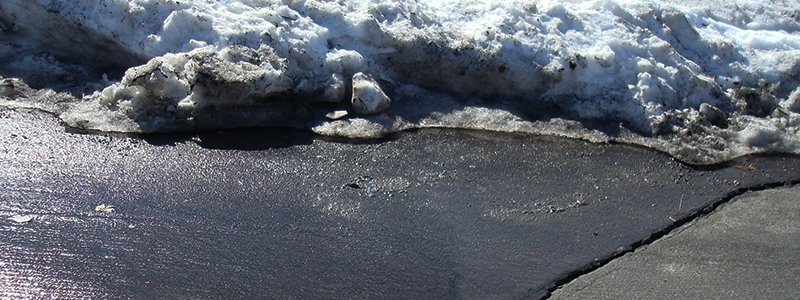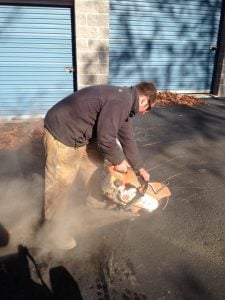Typically, at the beginning of December, asphalt plants begin to close up shop for the winter months. At this point in the season, the pavement repair of your parking lot should be complete. Or at least, they should be on your schedule to be taken care of within the next couple of weeks.
Preparing your pavement can help to decrease the amount of damage a harsh winter can cause. While potholes, and pavement damages are inevitable during the unforgiving months of winter, preparation can prevent major and costly damages. Or at least lessened, if you complete these important winter preparation items before December.
Make sure to:
- Seal any pavement cracks
- Fill any existing potholes
- That your pavement lines are visible
- Install your snow markers around curbing and stationary obstacles
- To document any broken curbing or asphalt damage prior to snow plowing season
- Snow plowing contract and plan is in place for salt/ice
Once paving companies close for the season, and the temperatures reach a state that is unworkable, only temporary fixes can happen.
Temporary winter pavement repair may include:
- Cold patching – Filling the hole with gravel/asphalt material without heating
- Infrared repair – Using innovative machinery to heat and soften the surface allows for it to be workable in any weather above 0 degrees. This is allowing for asphalt repair to take place through otherwise “off season” months.
If your parking lot is suffering from potholes, and any other tripping hazards during winter, you can call EastCoat Pavement. They can out and execute these temporary repairs to help avoid larger damages as the winter progresses. Once spring hits again, we will make sure to fix these problem areas completely with our more permanent methods of asphalt repair.
 Permanent pavement repair may include:
Permanent pavement repair may include:
- Saw cut and patch – This involves cutting and removing damaged areas and refilling them with hot mix asphalt.
- Milling – This involves the grinding of the pavement’s surface to desire depth. Next, a new layer of asphalt pavement is put on top to match the thickness of the prior surface depth.
- Remove and repave your parking lot completely is necessary.
If you have not completed the repairs mentioned earlier at this point, now is the time to actively get this done before we see our first snow, and temperatures continue to drop. Since the temperatures fluctuate so much in winter from below freezing to above freezing, a considerable amount of thawing and freezing takes place. This thaw-freeze cycle aids in creating cracks and pavement damages due to expansion and shrinking associated with water changing to ice, and back to water again. If your pavement’s winter checklist is not yet complete call EastCoat Pavement today to book your pavement repair appointment! Preparing your pavement now can potentially save you big bucks come spring!
See our related winter blogs:
Pothole Repair: 3 Basic Patching Methods
Prepare Asphalt For Winter: Crack Filling, Patching, Blacktop Sealer (Downloadable Winter Checklist)
Frost Heave & Your Asphalt
Why Fall Is The Best Time For Crack Filler Services



 Permanent pavement repair may include:
Permanent pavement repair may include: